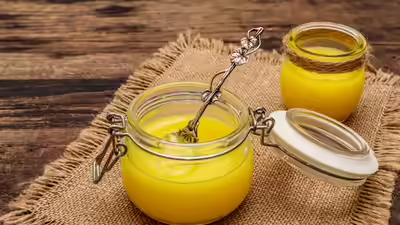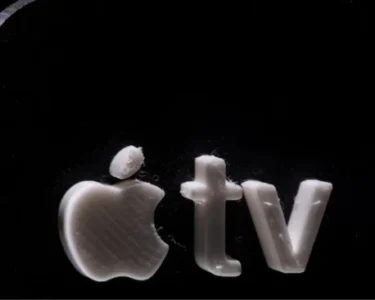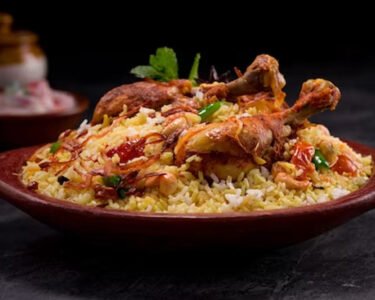Ghee (clarified butter) has been celebrated for centuries in Indian kitchens as a symbol of purity, health and nourishment. From “satvik” cooking to Ayurvedic traditions, ghee is often portrayed as a wholesome fat that supports digestion, skin, joints and general vitality. But in a recent counsel, celebrity nutritionist Dr Siddhant Bhargava cautions that this reputation can lead to overconsumption — and that excessive intake of ghee may actually backfire.
Here is a deeper dive into what he says, why it matters, and how you can still enjoy ghee sensibly.
1. The Myth: Ghee as a “magic health food”
Dr Bhargava explains that many people assume ghee works “magically” — for example, improving joint health, making skin glow, boosting metabolism or acting as a ‘healthy fat’ that can be freely added to every meal. He states that this belief is exaggerated and that ghee does not have a GPS that directs it only to your joints or only to your skin.
In other words: while ghee does contain beneficial components (including some fat-soluble vitamins and healthy fatty acids), it is still fat, and like any other fat, calories count. When the intake exceeds what your body can utilise (or exceeds your energy expenditure), you start paying a price.
2. What happens when you over-consume ghee
Dr Bhargava outlines several potential issues when ghee is consumed in large quantities, especially in modern diets where caloric intake often already runs high:
- Excess calories and weight gain: A tablespoon of ghee adds ~100-120 kcal. If you add extra ghee on top of a regular diet without accounting for the extra energy, the surplus can lead to weight gain.
- Saturated fat load: Although ghee contains some beneficial short- and medium-chain fatty acids, it also comprises a significant portion of saturated fats. Consuming high amounts may raise LDL (“bad”) cholesterol in susceptible individuals and increase cardiovascular risk when diet, genetics or lifestyle are unfavourable.
- False sense of invincibility: Because ghee is seen as “good fat”, people may be less cautious — over-drizzling it, using it with every dish, assuming more is better. Dr Bhargava emphasises that “healthy fats” are still fats, and excessive intake does not equate to better health.
- Interference with other nutrients: If you fill your plate with ghee-rich foods, you might inadvertently reduce your intake of vegetables, fibre, lean protein or whole grains — the real pillars of a balanced diet.
- Digestive load and fat metabolism: Although ghee is easier to digest than many other fats for some people, very large doses may still place demand on the liver and digestive system, especially in individuals with metabolic dysfunction or compromised fat-metabolism.
3. What does modern nutritional science say?
Dr Bhargava’s point aligns with contemporary nutrition science: while not demonising ghee, experts are increasingly emphasising moderation and context rather than blanket statements of “superfood” status. That means understanding:
- The overall dietary pattern (including total energy intake, physical activity, other fats such as vegetable oils, nuts, etc.).
- Individual factors — age, metabolic health, cholesterol profile, genetic predispositions, lifestyle (sedentary vs active).
- Portion size and frequency.
- Replacement vs addition. If you add ghee on top of your usual diet (instead of substituting a less-healthy fat), you raise your total energy and fat intake.
Dr Bhargava reminds us that ghee may fit into a healthy diet — but it must be counted, just like any other fat-rich food. It doesn’t grant immunity from the fundamentals of diet: energy balance, nutrient diversity, fibre, and movement.
4. Practical tips from Dr Bhargava to consume ghee wisely
Here are some of the suggestions he gives (and that anyone can apply) to include ghee in the diet without falling into the “too much” trap:
- Use ghee as a replacement, not as an addition. For example, if you were using oil or butter for cooking, you may switch to ghee—but don’t keep the oil and then add ghee on top.
- Measure portion size rather than free pouring. A tablespoon (15 ml) can be a good reference for one meal; if you’re adding more for flavour, adjust elsewhere (e.g., skip butter elsewhere, reduce other fats).
- Mind frequency. You don’t need ghee at every meal or in every dish. Rotating fats (olive oil, nuts, seeds, avocado, fish oil, etc.) ensures a variety of fatty acids and avoids over-loading saturated fats.
- Consider your overall diet and lifestyle. If you’re sedentary, overweight, have elevated cholesterol or metabolic syndrome, you may need to be stricter with saturated fats (including ghee). If you’re active, lean, metabolically healthy, richer fats may fit more easily.
- Focus on nutrient-dense foods. Don’t let ghee take the lead away from nutrient-rich vegetables, legumes, whole grains, fruit, lean protein.
- Be wary of claims — for example, “one daily spoon of ghee cures joint pain” or “ghee is always good for skin”. Dr Bhargava cautions that such claims oversimplify complex biological systems.
5. When ghee does offer benefits — and still needs moderation
It’s important to recognise that ghee isn’t “bad” per se. Dr Bhargava acknowledges that ghee does bring some benefits: it contains fat-soluble vitamins (A, D, E, K when sourced from grass-fed or enriched butter), it has beneficial short-chain fatty acids (like butyrate precursors) which may be good for gut health, and in Indian traditional diets it has cultural and culinary value. But the key message is: benefits are dose-dependent and context-dependent.
For example, if someone replaces refined vegetable oil for ghee in moderate quantity, while maintaining overall healthy dietary pattern, they may gain some benefit (flavour, satiety, stability in high-heat cooking). However, if someone keeps using vegetable oil and loads extra ghee on top of every meal, without accounting for the extra calories or fat quality, then the risk of negative outcomes increases.
6. The bottom line
In Dr Siddhant Bhargava’s words: “Ghee is still fat, and calories count.” He urges people not to regard ghee as a free-pass “miracle food” that can be consumed without regard for portions and context. Instead, treat it like one component in your overall diet, mindful of quantity, frequency, and the rest of your eating plan.
For those who admire the flavour and tradition of ghee, that’s great — keep it in your diet. But for those who believe adding extra ghee will automatically enhance health (on skin, joints, immunity) without reconsidering total calories, fat quality, and activity, it’s time to recalibrate.
Final Thoughts
In the journey of mindful eating, popular foods (even ones as beloved as ghee) deserve more nuanced understanding than “always good” or “always bad”. Dr Bhargava’s advice guides us to balance tradition with moderation, flavour with science, and cultural reverence with dietary prudence. So next time you reach for the ghee pot in your kitchen, remember: savour it, use it, but don’t overdo it—and always keep the bigger picture of your diet, activity and metabolic health in view.
Would you like me to pull together recommended daily portion sizes of ghee, some substitute options and a sample weekly meal-plan that incorporates ghee sensibly?
Do Follow Us On Instagram







